This article is included in the Oxbridge Essentials® “Economics Volume”.
I. Comparison of Application Popularity
1. Overview of 2020 Application Data for Economics-related Majors at Oxford
Oxford offers three Economics-related majors: PPE (Philosophy, Politics, and Economics), Economics and Management, and History and Economics. The first two are notoriously difficult to get into, and the last is not much easier.
The animated chart below shows that during the 2020 application season, the number of Chinese students applying for PPE and Economics and Management was quite high, ranking 4th and 5th respectively. The top four ranks were taken by STEM majors, making Economics the most popular among Chinese students applying for humanities.
History and Economics, on the other hand, was much less popular, with only 10 students from mainland China applying in the 2020 season, making it one of the least popular majors in terms of application numbers.
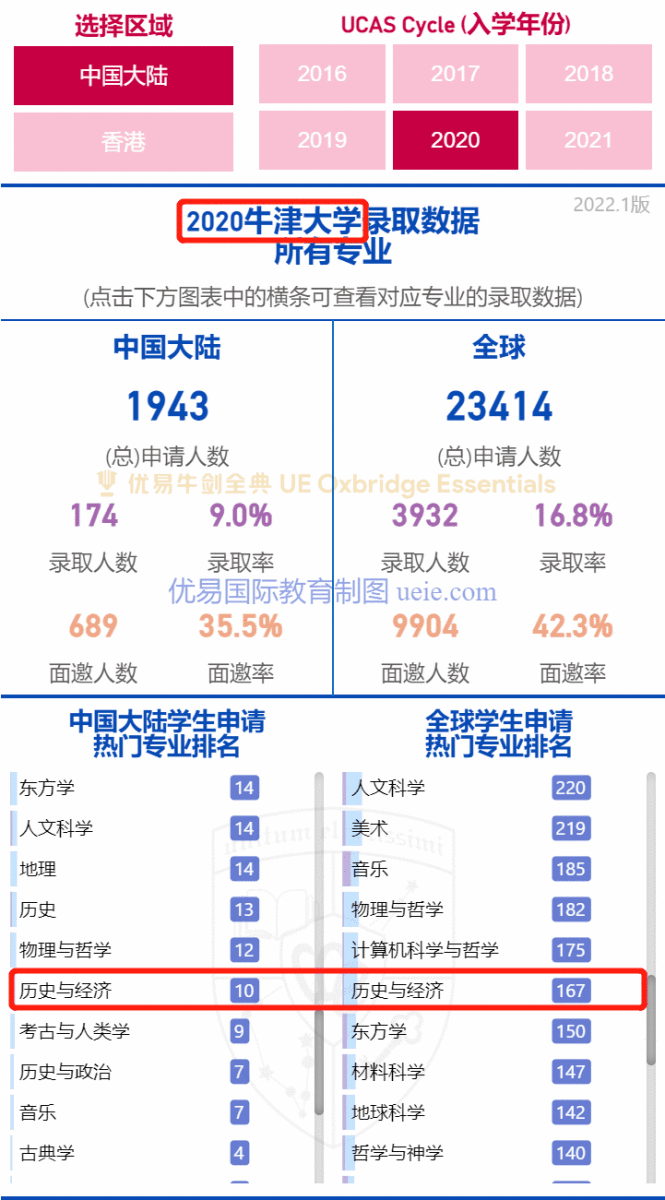
Comparing the popularity of applications from students worldwide, PPE is at the top, with extremely fierce competition; although Economics and Management is less popular than PPE, its acceptance rate is even lower, making it one of the most competitive majors at Oxford; History and Economics has fewer applicants, but also a low acceptance rate.
2. Proportion of Chinese Student Applications from 2016-2021
In the six years from 2016 to 2021, the total number of applicants from mainland China (excluding Hong Kong, Macau, and Taiwan) for Economics and Management exceeded those for PPE, with both groups accounting for about 7% of the total.
The number of Chinese students applying for History and Economics totaled over 50, accounting for 0.55%.
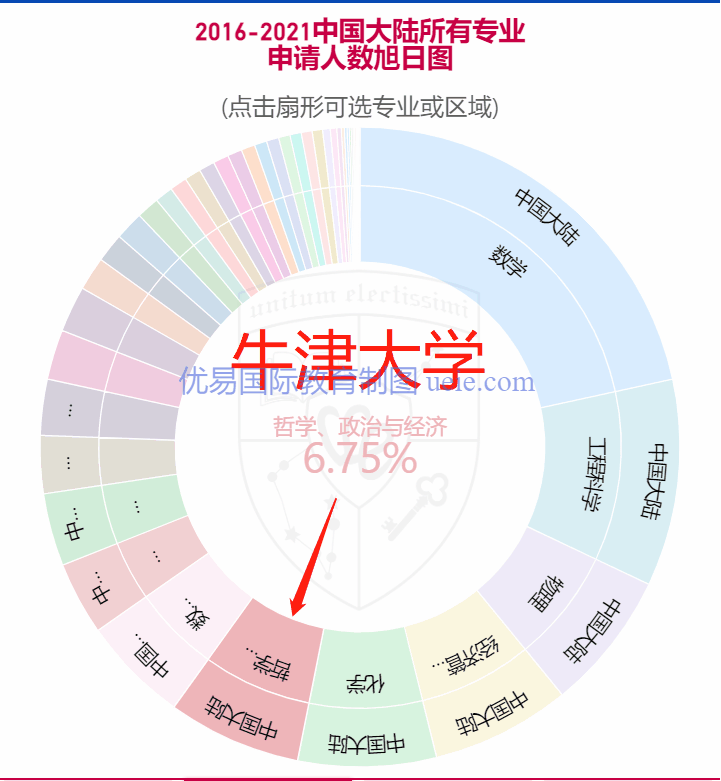
3. Application Difficulty for Chinese Students from 2016-2021
The scatter plot below graphically shows the intense competition for Oxford’s PPE and Economics and Management programs, which is extremely “fierce”:
Both PPE and Economics and Management are in the third tier—with similar numbers of applicants but very low acceptance rates (the size of the circles in the graph represents the acceptance rate); History and Economics is in the last tier, indistinguishable in the scatter plot.
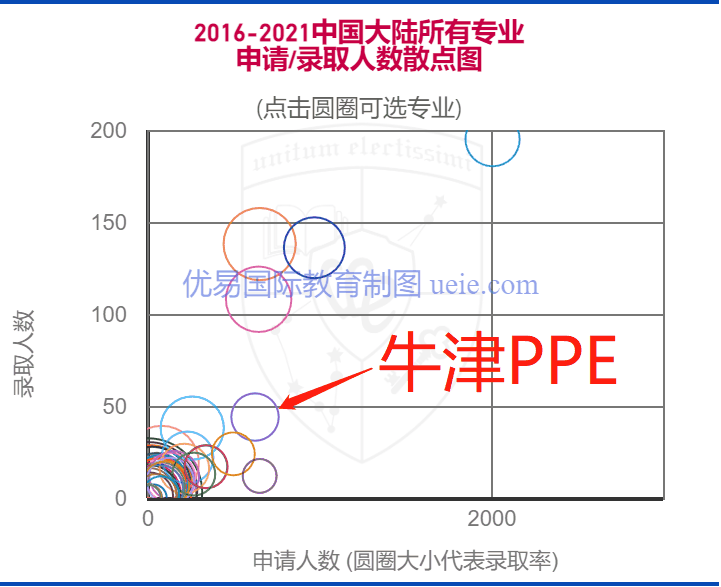
The above graph still doesn’t fully convey how low the success rate is for Chinese students applying for Economics majors—PPE is slightly better, with 10 admissions in 2021, which was a breakthrough, as the number of admissions had always been in single digits before; Economics and Management never had more than five admissions in any given year, and some years had none; History and Economics had no more than three admissions in any year, with several years at zero admissions. All in all, the data somewhat convey a very slim hope of success in applying for an Economics major… Despite this, in 2022, we still witnessed a Youyi student successfully gain admission to History and Economics, which was truly not easy. This shows that as long as one works hard and prepares in advance, there is still a glimmer of hope to stand out and secure an offer for an Economics major.
II. Comparison of Application Trends
Over the past decade, the acceptance rates for these three Economics-related majors at Oxford have been consistently low and have been declining year by year. The most significant drop in acceptance rates is seen in the History and Economics major, primarily because a small increase in the number of applicants leads to a considerable decrease in the acceptance rate due to the already low number of admissions. Looking at the growth in the number of applicants, PPE and Economics and Management have both seen an increase of approximately five to six hundred over ten years, an increase of over 40%.

The acceptance rate for Chinese students applying to Economics-related majors at Oxford is much lower than the global average, which implies that the difficulty for Chinese students to secure an offer in these competitive majors is significantly high.
III. Gender Comparison in Application Difficulty
The following three figures compare the data for male and female students globally applying for Economics-related majors at Oxford. For the PPE major, male applicants constitute nearly 11%, while female applicants are around 8.2%. However, it is evident that the acceptance rate for females is higher, indicating a more significant advantage for females when applying for PPE.
For Economics and Management, male applicants account for about 8.2%, while females are around 5%. Men have a greater advantage and a higher acceptance rate by several percentage points, with the number of admitted male students being about double that of females.
For History and Economics, male applicants are around 0.9% and females around 0.5%, with the number of male applicants still exceeding that of females.
However, in terms of admissions, sometimes males outnumber females and sometimes it’s the other way around, roughly equally divided. But since the number of male applicants is almost double that of females, their acceptance rate is significantly lower compared to females.

IV. Other Dimensions of Comparison
Due to the limitations of length and the functionality of dynamic data display, the comparison above only considers three dimensions of the application difficulty for Economics-related majors at Oxford.
The Youyi official website (ueie.com) also provides dynamic charts of Oxbridge admissions data that allow analysis by region, application method, college, and other criteria for a comprehensive overview of the global admissions data for various majors at Oxford and Cambridge over the past decade and data for Chinese students admitted in the last six years. For more content related to applications for Economics-related majors at Oxford


